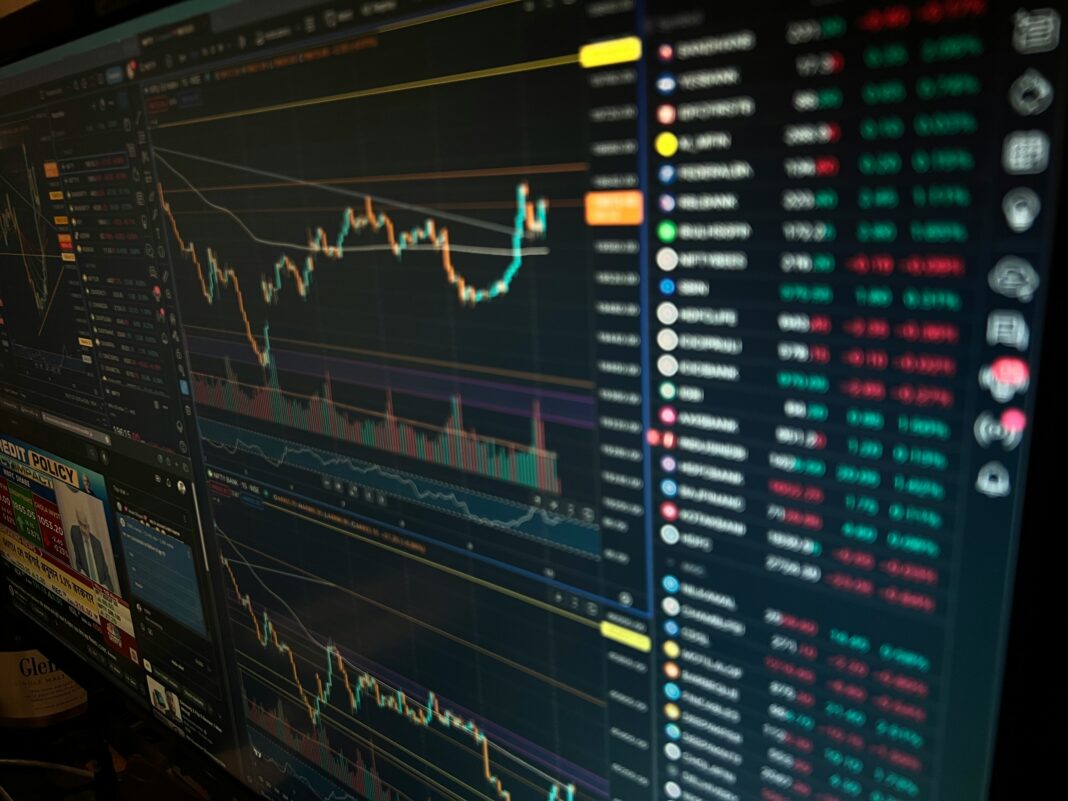Black Friday has evolved far beyond a single day of discounts. It now marks the symbolic start of the most lucrative period for global retailers — and especially for e-commerce giants. While performance varies depending on product mix and consumer preference, one trend is unmistakable: online spending continues to expand, and the digital-retail ecosystem remains one of the fastest-growing segments of the global economy.
That’s why this period often delivers a renewed momentum boost for major platforms such as Amazon, Shopify, Zalando and Allegro — companies that consistently sit at the centre of global retail and technology trends.
When Is Black Friday 2025 — And Why It Matters for Investors?
In 2025, Black Friday falls on 29 November, with the final week of the month expected to trigger the sharpest escalation in shopping activity ahead of the holiday season. Historically, retail and e-commerce stocks outperform the S&P 500 in both the build-up to Black Friday and the weeks immediately after — a pattern closely watched by investors tracking global market sentiment.
During the 2024 shopping window, global online sales climbed 5% year-on-year, surpassing $74 billion. In the U.S. alone, online spending surged more than 10% to $10.8 billion. Kepler Analytics noted that Black Friday week in 2023 produced retail sales 93% higher than the average week, illustrating the extraordinary concentration of spending power.
What Black Friday Signals for Wall Street and E-Commerce Stocks
For investors, Black Friday is not simply a retail event — it is a real-time indicator of consumer strength. Elevated spending levels often push expectations higher for Q4 earnings across the retail, logistics and digital-commerce sectors.
Mastercard SpendingPulse reported that last year overall retail sales rose 3.5% year-over-year, while e-commerce sales jumped an exceptional 14.6%. That gap highlights where long-term growth momentum lies: in digital ecosystems, scalable marketplaces and data-driven customer engagement — the same areas shaping our coverage of global business transformation.
What to Expect in 2025
Analysts at Bain & Company project that the Black Friday–Cyber Monday period in the U.S. will account for about 9% of total holiday retail spending, with sales expected to grow roughly 11% year-over-year.
Online sales during Black Friday 2025 could reach around $12 billion in the U.S., while global e-commerce spending in the final week of November is forecast to rise 8% year-over-year, hitting $80 billion compared with $74.4 billion in 2024.
These growth expectations reflect broader consumer patterns we track in European and international markets, where inflation pressures are easing and discretionary spending is stabilising.
Which Companies Stand to Benefit Most?
Over the past decade, leading e-commerce stocks have consistently outperformed the S&P 500 during the Black Friday period. If the pattern holds true again, platform leaders such as Amazon, Shopify, Zalando and Allegro could emerge as the season’s biggest beneficiaries — supported by global consumer appetite, logistics optimisation and the unstoppable expansion of digital retail.
The winners will be those best positioned in:
-
scalable fulfilment networks
-
advanced data-led retail models
-
cost-efficient digital infrastructure
-
high-engagement marketplace ecosystems
All core themes shaping the future of technology-driven retail and investor strategy.

Source: XTB Research
Seasonality & Retail Stocks
For the past 20 years, retail stocks have consistently outperformed the main equities benchmark—especially in the 17 days leading up to Black Friday. The business models of retailers such as Macy’s or Tapestry Inc. mean they tend to benefit more from a strong Q4 retail season than the one‐day event itself. But Black Friday still marks a key seasonal boundary.

Data covers 2004-2024. Source: XTB Research.
Post‐Black Friday Performance
Even three weeks after Black Friday, retail stocks typically continue to outperform the market—but the gap begins to narrow. That suggests that as of 7 November 2025, we’re standing at the threshold of the best seasonal window for retail and e-commerce shares. Sure, part of this is due to the so-called “Santa Rally”, but the reason retail stocks are leading is obvious: they power the gift buying spree.

Data covers 2004-2024. Source: XTB Research.
E-commerce Platforms as Key Winners
What are the stocks that are likely to benefit the most this year? Our focus is on e-commerce platforms, because they feel the volume surge more directly, even when consumer trends shift.
● USA: Amazon.com Inc. & Shopify Inc. — massive scale, global reach.
● Europe / CEE: Zalando & Allegro — less appreciated by investors, but still with seasonality growth potential in 2025.
While Amazon and Shopify are already seen as solid, the European pair, with much lower valuation, may well be the dark horses this season. Beyond pure e-commerce platforms, companies like Nike, Inc. also stand to gain. Nike’s D2C (digital direct-to-consumer) channel has its peak season in Black Friday: strong e-commerce growth, brand power, and omnichannel rollout make it a compelling story. Similarly, keep an eye on names like Levi Strauss & Co. or L’Oreal S.A. for attractive upside.
Stock Charts
Amazon (AMZN.US, D1)
Amazon closed a stellar third quarter, once again proving that scale doesn’t kill growth. Despite being one of the largest companies on the planet, revenue surged at a double-digit pace, while profitability blew past Wall Street expectations. The company also issued an upbeat outlook for Q4, hinting that the holiday season could be another blockbuster.
From a technical standpoint, Amazon’s share price has pulled back from all-time highs and is now testing the post-earnings breakout zone near $242, which also aligns with the January 2025 peak.
This area could act as a strong demand zone before the next leg higher. The next key resistance lies around $255, where profit-taking might emerge — but the broader setup remains bullish.

Source: xStation5
Shopify (SHOP.US, D1)
Shopify’s shares have had a softer patch recently, retreating about 10 % from their record highs, yet they continue to respect the broader ascending channel. The company remains at the center of the global e-commerce ecosystem — powering millions of online stores — and seasonality could reignite buying interest just as price action approaches the lower trendline support.
A rebound from this zone would fit the historical pattern: November and December have repeatedly proven to be Shopify’s strongest performance window, driven by soaring merchant volumes during Black Friday and Cyber Monday.

Source: xStation5
Zalando (ZAL.DE, D1)
Once a darling of Europe’s growth story, Zalando has struggled since 2021, unable to reverse its prolonged downtrend. Still, the company retains one of the strongest brand positions in European online fashion, serving millions of active customers and housing a powerful logistics network.
Black Friday could act as a catalyst for a trend reversal: any sign of improving order volumes or margin recovery might spark a short-term relief rally after multiple quarters of decline.
Investors often rediscover Zalando during seasonal peaks — and this year may be no exception.

Source: xStation5
Nike (NKE.US, D1)
Nike slipped back below its 200-day exponential moving average, resuming a period of sharp declines, yet the brand’s story remains far from over. The company enters the Black Friday window with the potential to surprise on both sentiment and fundamentals.
Historically, Black Friday marks Nike’s record period for direct-to-consumer (D2C) sales, powered by Nike.com and the SNKRS app. This omnichannel model — combining online reach, brand strength, and product exclusivity — continues to enhance margins by cutting out intermediaries.
Adding to the intrigue, the U.S. Supreme Court decision expected by January 2026 on tariff policy changes announced by Donald Trump could favor companies heavily exposed to import duties, potentially boosting Nike’s profitability outlook. With strong brand equity and seasonal tailwinds, the stock may soon find its footing again.

Source: xStation5







































